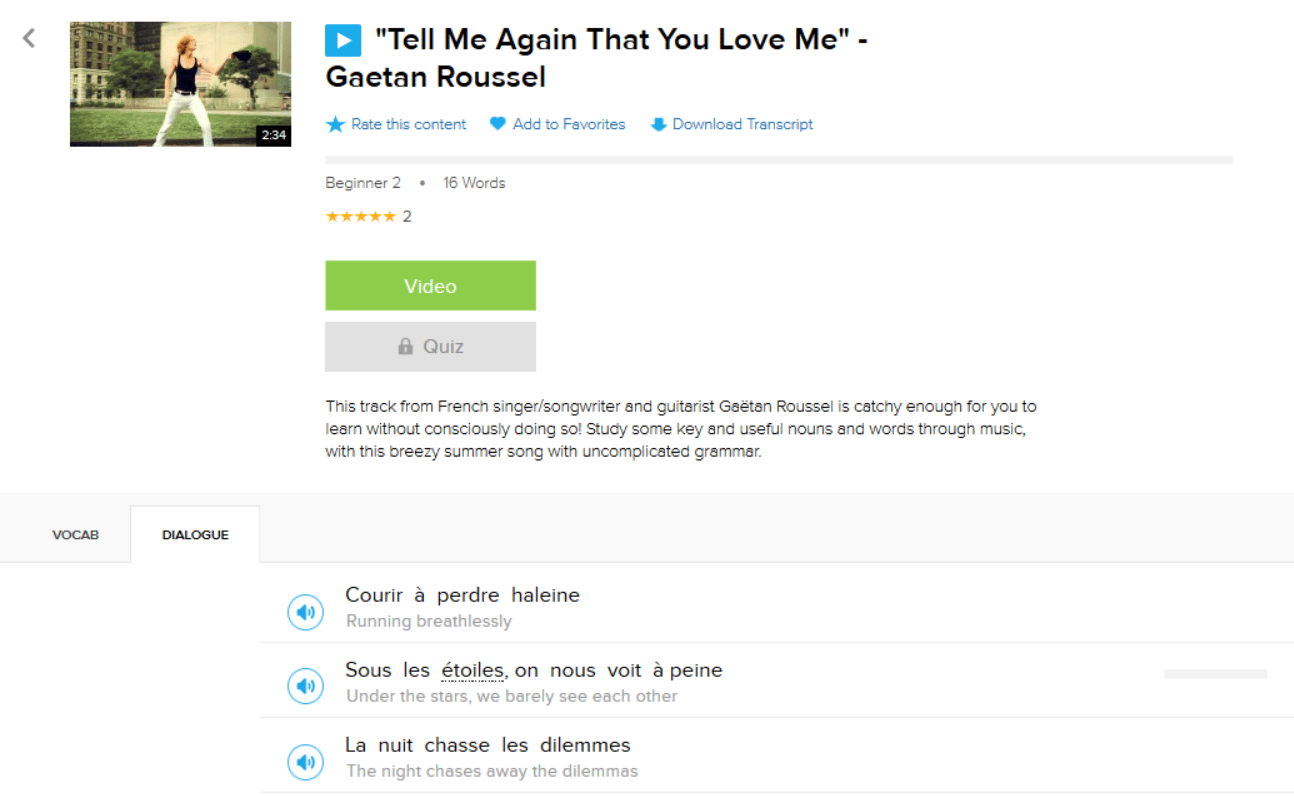How to Use the 15 French Possessive Adjectives

French possessive adjectives can be a bit of a puzzle, especially because they change based on gender, plurality and even the first letter of the following noun. Understanding these words is essential for talking about what’s “mine,” “yours,” or “theirs” in French.
Below we’ll break down the forms of French possessive adjectives, show you when and how to use them and share tips for mastering the trickier rules.
Download: This blog post is available as a convenient and portable PDF that you can take anywhere. Click here to get a copy. (Download)
What Are the French Possessive Adjectives?
Singular French possessive adjectives:
First person “my” is mon, ma or mes.
Second person “your” is ton, ta or tes.
Third person “his” or “her” is son, sa or ses.
And the plural French possessive adjectives:
First person “our” is notre or nos.
Second person “your” is votre or vos.
Third person “their” is leur or leurs.
When to Use Possessive Adjectives in French
Possession indicates who an object belongs to.
It’s important to be able to indicate possession when dealing with food and drinks, or other stuff you don’t want people grabbing out of your hand.
For example, I might say:
“Hey! That’s my coffee!”
You know you better back away because that coffee belongs to me, I intend to drink it and I may get grumpy if you take it from me.
How to Use Possessive Adjectives in French
These words are called possessive adjectives because they modify the following noun in the same way that regular adjectives do (i.e., in “the red house,” “house” is a noun and it’s modified by the adjective “red”).
When used properly, French possessive adjectives:
- go before the noun they’re modifying
- replace articles such as le, la or les (the)
For example, to show that le café (the coffee) is specifically my coffee, I would say mon café (my coffee).
But, wait! There’s more.
Remember that French possessive adjectives have different forms based on ALL of the following:
- the possessor (i.e., the person who owns the object)
- the gender of the noun
- whether the noun is singular or plural
French Possessive Adjectives in Action
Let’s review the forms of the French possessive adjectives:
| French | For use with... | English |
|---|---|---|
| mon | Singular masculine nouns | my |
| ma | Singular feminine nouns | my |
| mes | All plural nouns | my |
| ton | Singular masculine nouns | your |
| ta | Singular feminine nouns | your |
| tes | All plural nouns | your |
| son | Singular masculine nouns | his/her |
| sa | Singular feminine nouns | his/her |
| ses | All plural nouns | his/her |
| notre | All singular nouns | our |
| nos | All plural nouns | our |
| votre | All singular nouns | your (plural) |
| vos | All plural nouns | your (plural) |
| leur | All singular nouns | their |
| leurs | All plural nouns | their |
Clearly, there’s a lot of information to consider when choosing which to use. Let’s take a look at examples!
Mon / Ma / Mes (My)
The English word “my” signifies that the noun belongs to the speaker. In French, that’s the je (I) of the conversation.
So for French masculine words, we say mon (my). For feminine words, we say ma (my). And for plural words, masculine or feminine, we say mes (my).
- C’est mon café ! (It’s my coffee!)
- Où est ma règle ? (Where is my ruler?)
- Ce sont mes livres. (Those are my books.)
Ton / Ta / Tes (Your)
The word “your” in English means that the following noun belongs to the tu (you) in the conversation.
In this case, if the following word is masculine, we say ton (your). If the word is feminine, we say ta (your). And if the word is plural, we say tes (your) for both masculine and feminine nouns.
- Ceci est ton café ! (That one is your coffee!)
- Où est ta voiture ? (Where is your car?)
- Où sont tes clés ? (Where are your keys?)
Note: To keep things simple in this post, I’ll use tu as the singular “you” and vous as the plural “you all.” It’s a little more complicated than that once you get into formal French, however, so be sure to check into that.
Son / Sa / Ses (His/Her)
Unlike English, French does not distinguish between “his” and “her” when it comes to possession. The French possessive adjective only changes depending on the gender or plurality of the following noun.
Son means “his” or “her” and is for masculine nouns. Sa means “his” or “her” and is for feminine nouns. Finally, ses means “his” or “her” and is for masculine and feminine nouns in the plural.
- Non, c’est son café ! (No, that’s his/her coffee!)
- Où est sa télévision ? (Where is his/her television?)
- Cherche ses clés ! (Look for his/her keys!)
Notre / Nos (Our)
Ah, simplicity! Well, kinda…
To say “our” in French, we use notre for both masculine and feminine singular nouns. For plural nouns, we use nos.
- C’est notre café ! (It’s our coffee!)
- Voilà notre télévision. (There’s our television.)
- Est-ce que vous voudriez lire nos livres ? (Would you like to read our books?)
The simplicity continues.
To say that something belongs to “you all” in French, use votre (your) for both masculine and feminine singular nouns. For plural nouns, use vos.
- Où est votre stylo ? (Where is your pen?)
- Est-ce que ceci est votre voiture ? (Is this your car?)
- Ce sont vos cafés. (These are your coffees.)
Leur / Leurs (Their)
Lastly, the possessive adjectives leur and leurs mean “their.”
Leur is for both masculine and feminine singular nouns, and leurs is for both masculine and feminine plural nouns.
- Oui, c’est leur stylo. (Yes, it’s their pen.)
- Où est leur télévision ? (Where is their television?)
- Ce sont leurs cafés. (These are their coffees.)
Rules for French Possessive Words
Feminine Possessive Adjectives and Vowels
What would a French grammatical construction be without an exception?
The feminine possessive adjectives ma (my), ta (your) and sa (his/her) are special in the sense that they cannot be used in front of a noun that starts with a vowel. This is similar to the way le or la (the) must become l’ in front of a vowel.
The feminine possessive adjectives take the form of masculine possessive adjectives when used in front of a feminine noun that begins with a French vowel.
In short, ma (my), ta (your) and sa (his/her) become mon (my), ton (your) and son (his/her) respectively before a vowel.
For example:
- C’est mon amie. (She’s my friend.)
Amie is feminine, but we cannot put ma in front of it, so we must use mon.
- Je vais à ton école. (I’m going to your school.)
École is feminine, but we cannot put ta in front of it, so we must use ton.
- Quelle est son idée ? (What’s his/her idea?)
Idée is feminine, but we cannot put sa in front of it, so we must use son.
Everything Needs a Possessive Adjective
Unlike in English, every French noun in a list must have its own possessive adjective, even if the possessors are the same.
In English, we can say:
“Where are my book and cup?”
In French, however, we must say:
“Où sont mon livre et ma tasse?”
For more practice with French possessive adjectives, check out FluentU. The authentic French videos will allow you to hear possessive adjectives as they sound in conversation.
FluentU takes authentic videos—like music videos, movie trailers, news and inspiring talks—and turns them into personalized language learning lessons.
You can try FluentU for free for 2 weeks. Check out the website or download the iOS app or Android app.
P.S. Click here to take advantage of our current sale! (Expires at the end of this month.)
It’s time to make French possessive adjectives your own!
(Just remember that’s my coffee, please and thank you.)
Download: This blog post is available as a convenient and portable PDF that you can take anywhere. Click here to get a copy. (Download)
And one more thing...
If you like learning French on your own time and from the comfort of your smart device, then I'd be remiss to not tell you about FluentU.
FluentU has a wide variety of great content, like interviews, documentary excerpts and web series, as you can see here:

FluentU brings native French videos with reach. With interactive captions, you can tap on any word to see an image, definition and useful examples.

For example, if you tap on the word "crois," you'll see this:

Practice and reinforce all the vocabulary you've learned in a given video with learn mode. Swipe left or right to see more examples for the word you’re learning, and play the mini-games found in our dynamic flashcards, like "fill in the blank."

All throughout, FluentU tracks the vocabulary that you’re learning and uses this information to give you a totally personalized experience. It gives you extra practice with difficult words—and reminds you when it’s time to review what you’ve learned.
Start using the FluentU website on your computer or tablet or, better yet, download the FluentU app from the iTunes or Google Play store. Click here to take advantage of our current sale! (Expires at the end of this month.)








